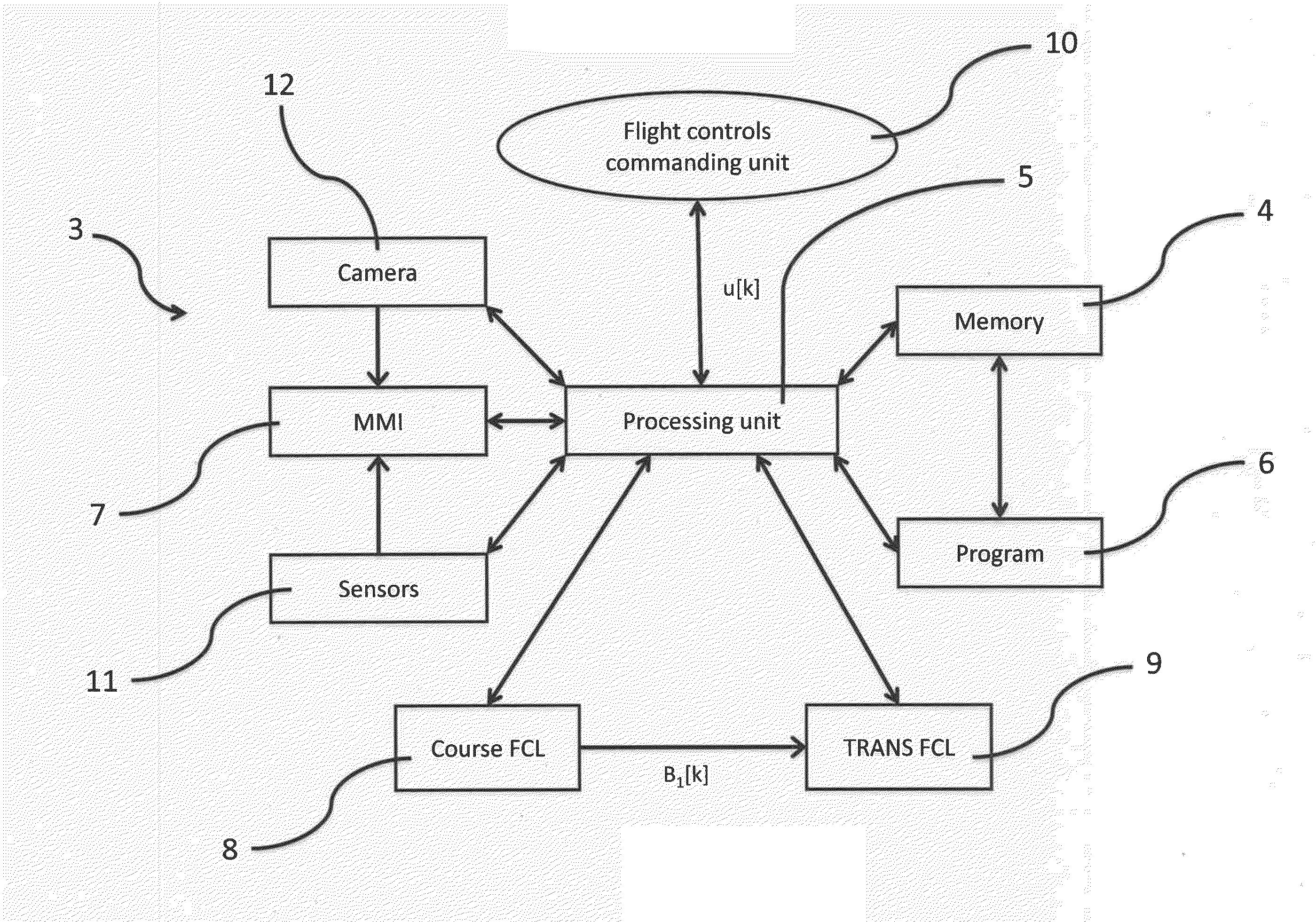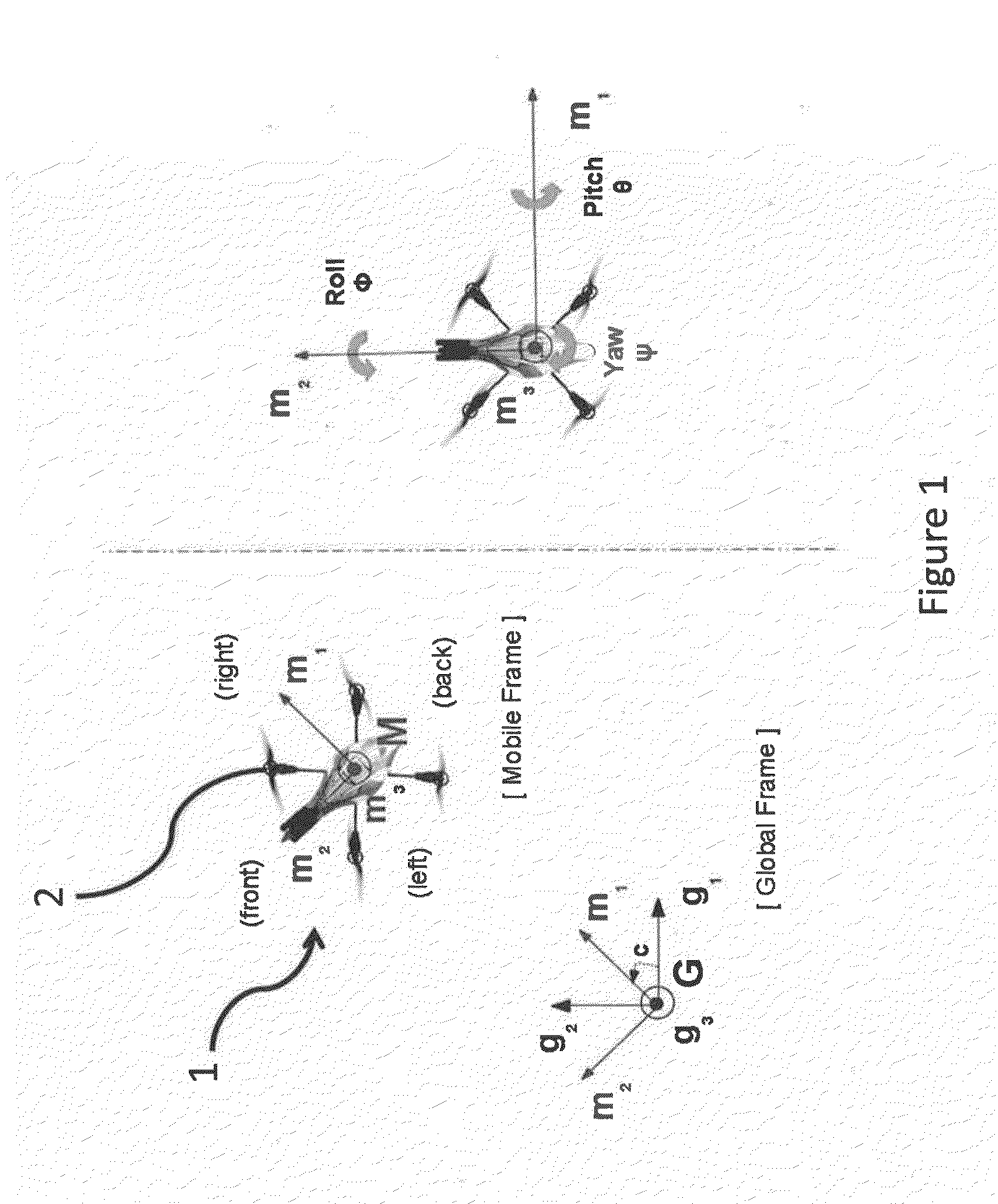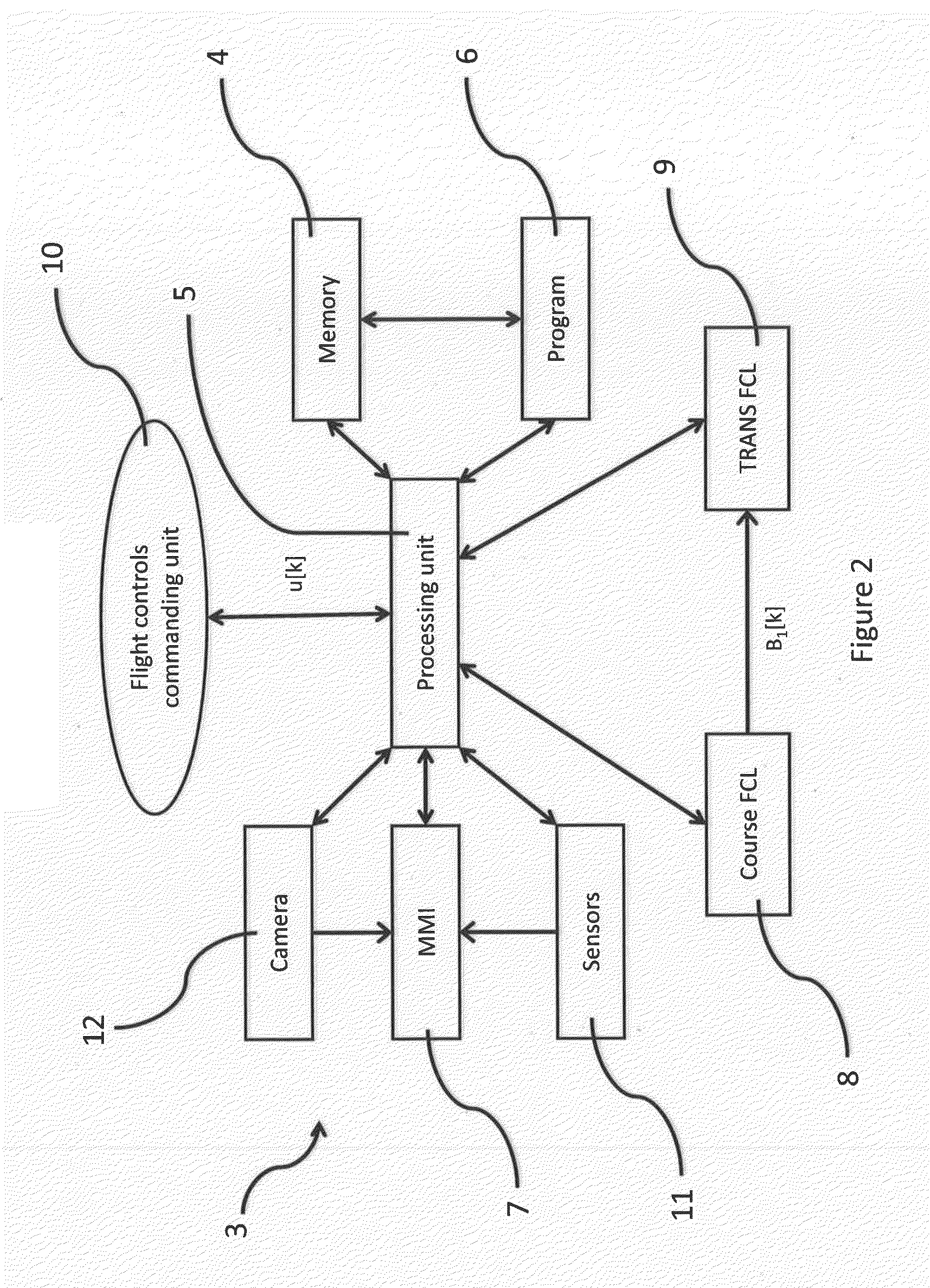Method for controlling a path of a rotary-wing drone, a corresponding system, a rotary-wing drone implementing this system and the related uses of such a drone
a technology of rotary-wing drones and path control, which is applied in the direction of process control, machine control, instruments, etc., can solve the problems of inability to control the drone in a very accurate way, the computation of the whole controlling system is less optimal in terms of flight control command than a method, and the difficulty of adjusting the method, so as to reduce the computational load of the whole controlling method, the effect of easy adaptation
- Summary
- Abstract
- Description
- Claims
- Application Information
AI Technical Summary
Benefits of technology
Problems solved by technology
Method used
Image
Examples
Embodiment Construction
[0088]The present invention relates to systems and methods for controlling a rotary-wing drone embodying two feedback control loops that can be performed independently. Many specific details of certain embodiments of the invention are set forth in the following description and in FIGS. 1 to 4 to provide a thorough understanding of such embodiments. One skilled in the art, however, will understand that the present invention may have additional embodiments, or that the present invention may be practiced without several of the details described in the following description.
[0089]Flight Controls and Dynamics of a Rotary-Wing Drone
[0090]FIG. 1 illustrates schematically the flight controls of a rotary-wing drone 1 featuring four distinctive rotors 2. As mentioned in the introduction of the background art, it is therefore by changing the rotation speed and / or the angular inclination of the same rotors 2 that an operator is controlling the drone 1. FIG. 1 especially illustrates the position...
PUM
 Login to View More
Login to View More Abstract
Description
Claims
Application Information
 Login to View More
Login to View More - R&D
- Intellectual Property
- Life Sciences
- Materials
- Tech Scout
- Unparalleled Data Quality
- Higher Quality Content
- 60% Fewer Hallucinations
Browse by: Latest US Patents, China's latest patents, Technical Efficacy Thesaurus, Application Domain, Technology Topic, Popular Technical Reports.
© 2025 PatSnap. All rights reserved.Legal|Privacy policy|Modern Slavery Act Transparency Statement|Sitemap|About US| Contact US: help@patsnap.com



